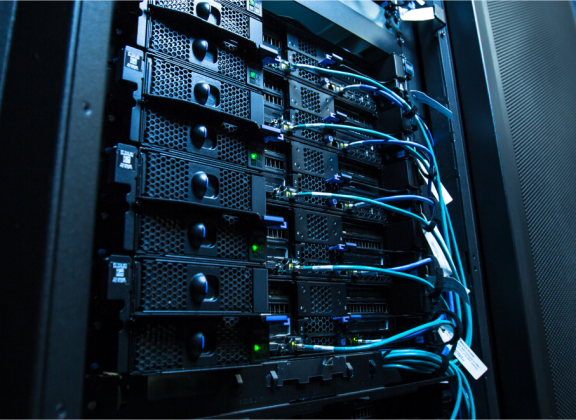Today’s IPTV boxes and media players are far more than simple streaming devices. With powerful processors, smart TV apps, and the ability to handle 4K video, they have become multimedia hubs for the entire home. However, despite their capabilities, these devices often come with limited internal storage, which can quickly become a bottleneck as users download apps, stream content, and save media files.
Expanding storage becomes an essential step — but with several options available, how do you decide which one is right for you? Should you use a microSD card for its simplicity, a USB-SSD for better speed, or a NAS for maximum scalability? Each solution has a unique role and use case, and understanding their characteristics will help you make a more informed choice.
The Compact Convenience of microSD Cards
For users who want a quick and tidy solution, microSD cards offer unmatched convenience. Most modern media players support microSD expansion out of the box, allowing users to add extra storage in just seconds. This method keeps your setup clean and unobtrusive, making it especially appealing for living rooms or bedrooms where aesthetics matter.
While compact and easy to install, microSD cards are not performance champions. Although high-speed variants are available, the bandwidth they offer is still limited compared to USB-based or network storage. This becomes particularly noticeable when working with large files, such as high-bitrate video, or when apps require fast storage access to run smoothly.
Durability can also be a concern. microSD cards are optimized for occasional reads and writes, not the heavy, sustained usage that some media apps or download managers might demand. Over time, this can lead to data integrity issues or even card failure, especially with lower-quality models.
That said, for users who primarily stream content and only need additional space for apps, subtitles, or a modest media library, microSD cards are still a practical and cost-effective option.
USB-SSDs: The Optimal Balance of Speed and Simplicity
For those seeking a noticeable performance boost, USB-connected solid-state drives present a compelling choice. USB-SSDs provide significantly faster read and write speeds than microSD cards, making them suitable for 4K playback, high-speed downloads, and smooth app operation.
Installation is straightforward: simply connect the SSD to the available USB port on your device. Most Android-based media players support plug-and-play functionality and allow you to format the drive as external or adoptable storage. This gives you more flexibility in how the device uses the space, whether it’s for storing media or expanding internal storage for apps and system files.
The primary benefit of USB-SSDs lies in their ability to handle intensive workloads without overheating or slowing down. They’re built for long-term use, with high endurance ratings and robust data integrity protections. Compared to traditional USB flash drives, SSDs also offer significantly better performance and reliability.
The only drawback might be physical — a USB-SSD adds bulk and may require cable management. On compact media setups, this could be seen as a disadvantage. Also, performance depends on the version of USB supported by your device; older USB 2.0 ports will limit the drive’s potential.
Still, for users who value speed and storage reliability, USB-SSDs hit the sweet spot between cost, performance, and ease of use.
NAS: Scalable and Centralized Storage for Advanced Users
When it comes to handling massive media libraries or serving multiple devices simultaneously, network-attached storage (NAS) systems offer an entirely different level of functionality. A NAS unit connects to your local network and acts as a centralized media server, accessible by your media player as well as other smart devices in your home.
The strength of NAS lies in its scalability. Users can start with a few terabytes and expand as needed by adding more drives or upgrading to larger capacities. Many NAS systems also support RAID configurations for redundancy, ensuring data safety even in the event of a hardware failure.
With NAS, your media content is no longer tied to a single device. You can stream high-resolution movies, access files remotely, and even use the NAS for automated backups or cloud syncing. Modern media players that support protocols like SMB, NFS, or DLNA can seamlessly integrate with a NAS, enabling a fluid and high-performance experience.
Of course, all this power comes with complexity. Setting up a NAS requires basic knowledge of networking, file sharing, and drive management. Initial costs are also higher — not only for the NAS hardware but also for the hard drives it requires. Furthermore, achieving smooth playback over Wi-Fi may require a robust router or even a wired Ethernet connection for best results.
Nevertheless, for tech-savvy users or households with multiple media players and smart TVs, a NAS is the ultimate storage solution. It provides unmatched flexibility and central control over your digital content.
Choosing Based on Use Case
Expanding your IPTV or media player’s storage isn’t just about adding gigabytes — it’s about tailoring your system to your content consumption habits. A microSD card offers a quick and discreet upgrade for lighter needs. A USB-SSD brings reliable speed and durability to the table, making it a perfect match for most home users. A NAS, while more complex, empowers users with scalable, shared, and centralized storage that can support an entire smart home ecosystem.
There’s no one-size-fits-all solution — the best choice depends on how much media you consume, how you prefer to store it, and what level of performance and scalability you expect. Whether you go for the simplicity of a microSD, the efficiency of a USB-SSD, or the power of a NAS, each option opens the door to a more flexible and satisfying media experience.
